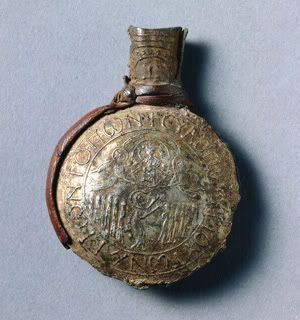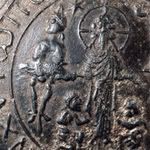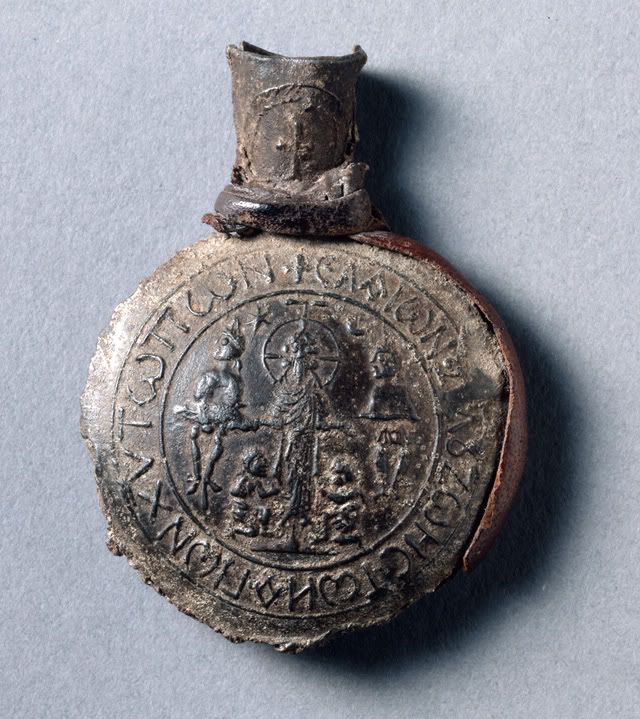
Culture: Byzantine (Palestine)
Date: late 6th or early 7th century
Material: Tin-lead alloy, fragments of leather
Dimensions: 6.2 × 4.2 × 1.5 cm
Inscribed: +ΕΛΑΙΩΝ • ΞΥΛΟΥ • ΖΩΗΣ • ΤΩΝ • ΑΓΙΩΝ • ΧΡΙΣΤΟΥ • ΤΟΠΩΝΩΝ (+ Oil of the Wood of Life from the Holy Places of Christ); + ΕΥΛΟΓΙΑ • ΚΥΡΙΟΥ ΤΩΝ • ΑΓΙΩΝ • ΤΟΠΩΝ (+ Blessing of the Lord from the Holy Places)
Provenance: Bernard Manhes, Grenoble and Paris; Bruce Ferrini, Akron, Ohio
The Cleveland Museum of Art, John L. Severance Fund
This lead ampulla, or flask, is decorated on both sides with images of central events from the life of Christ, namely, the Crucifixion and the Ascension. The inscriptions surrounding these images reveal that the flask once contained "oil of the wood of life," namely, oil that had been brought into contact with the relic of the True Cross.

Guided by the belief that physical contact with holy matter would result in the transfer of its miraculous properties, Christian pilgrims to the Holy Land not only desired to touch and kiss objects associated with Christ's Passion at sites such as Mount Golgotha and Mount Sion; they also sought to preserve and carry home with them substances that could claim some physical contact or proximity to the sites and objects they had seen and venerated.
Frequently referred to as eulogiai (blessings) in contemporary pilgrim accounts, such substances often included wax from candles or fragrant oil from lamps that burned at shrines or tombs of holy martyrs. Depending on the pilgrim's financial resources, these substances could be collected, brought into contact with important relics such as the True Cross, and eventually carried away in small portable ampullae of terracotta, lead, and presumably also more precious materials such as silver, offered for sale.
While the inscriptions on the "eulogia" flasks recalled the places from which the sacred substances derived, the images imprinted on them served as visual reminders of the very events that endowed these places with their sacred power, namely, the Passion and Resurrection of Christ.

See also: http://rublev-museum.livejournal.com/109629.html


Комментариев нет:
Отправить комментарий